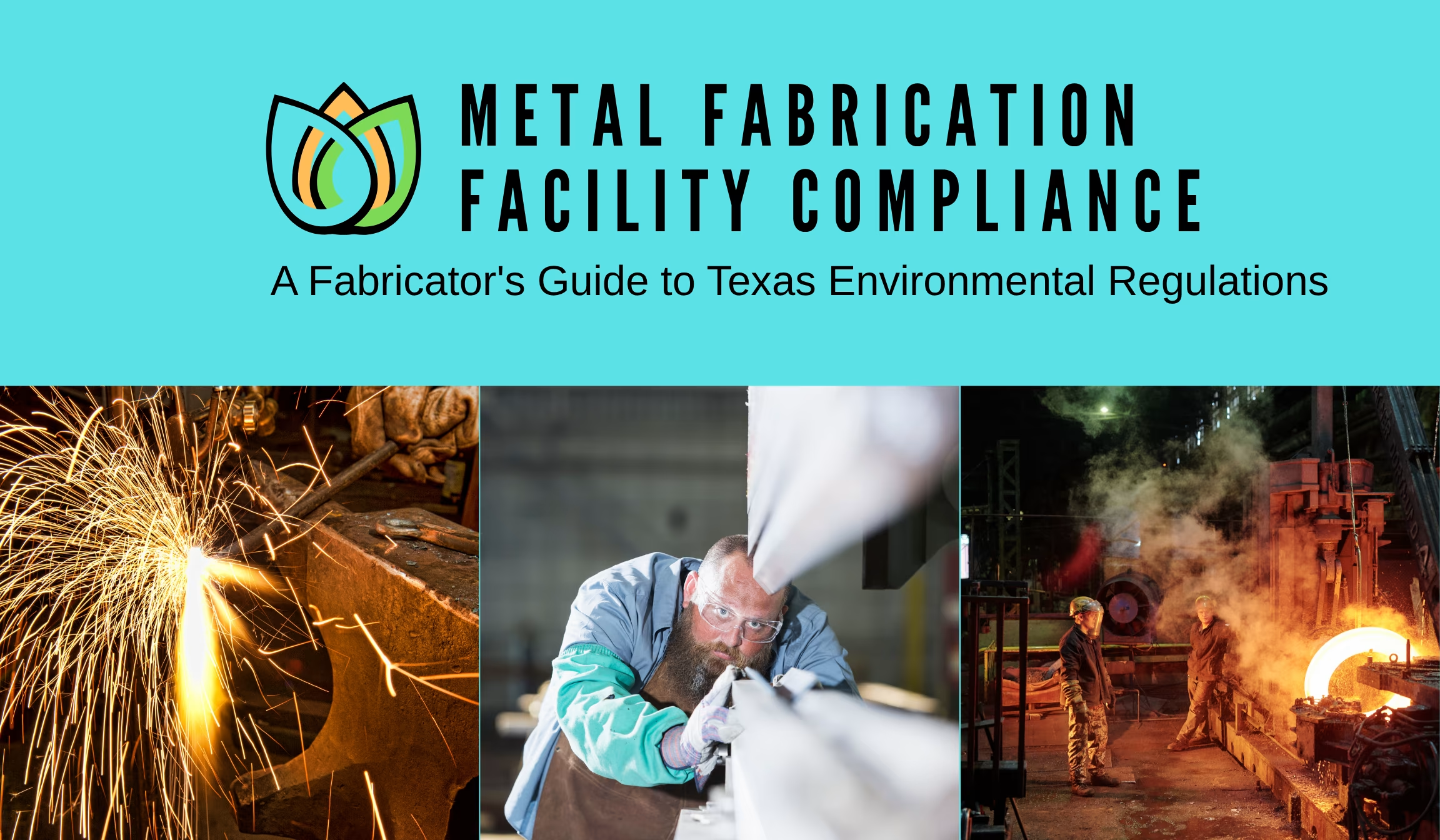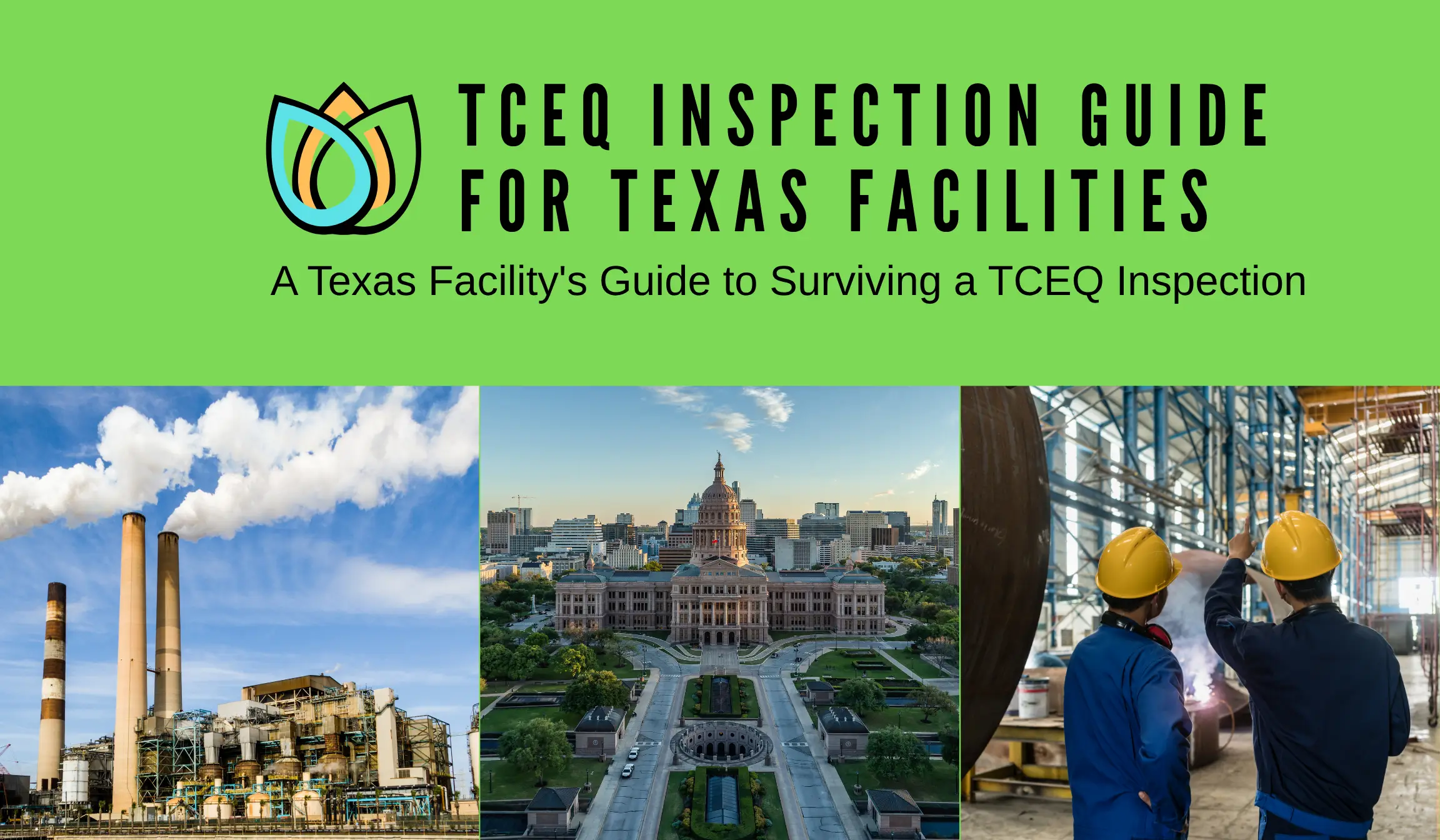A COMPREHENSIVE GUIDE
Mastering TCEQ Stormwater Compliance: Your Guide to Avoiding Costly Fines in Texas
Stormwater compliance in Texas is more than a line item—it's a critical shield against steep financial penalties and operational disruptions. This guide provides industrial operators with the expert insights and actionable steps needed to navigate TCEQ regulations and protect their business.
The High Cost of Non-Compliance
Per Day, Per Violation
TCEQ fines can escalate rapidly, turning a minor oversight into a major financial liability that impacts your bottom line.
Operational Shutdowns
Enforcement can halt facility operations, leading to costly downtime, project delays, and lost revenue.
Reputational Damage
Environmental violations can harm client relationships, public perception, and your company's standing in the community.
The Industrial Permit: Understanding the MSGP (TXR050000)
For industrial facilities, compliance is governed by the Multi-Sector General Permit (MSGP), TXR050000. This permit is more complex than construction permits because it covers a wide array of industrial activities and focuses on preventing chemical and material pollution from ongoing operations.
🏭Who Needs This Permit?
- Basis
- Coverage is determined by your facility's Standard Industrial Classification (SIC) or NAICS code.
- Condition
- Required if your code is listed in the MSGP and industrial materials or activities are exposed to rain.
📝The Core of the MSGP
- The SWPPP
- The Stormwater Pollution Prevention Plan is the central document outlining how your facility will control pollutants.
- Key Principle
- It's not a static document; it's a living plan that must reflect your site's current reality.

Unsure If You Need a Permit?
Navigating SIC codes and permit applicability can be confusing. Use our free interactive guide to get a clear answer in minutes and understand your potential compliance requirements.
Key Industrial SWPPP Components
An industrial SWPPP is a multi-faceted plan addressing ongoing operational risks. All components are critical for compliance and are scrutinized during TCEQ inspections.
Top 4 Industrial Stormwater Violations: A Deeper Dive
1. Failure to Monitor & Document
Regulatory Basis: MSGP Part III & IV
This is the most frequent and costly violation. The MSGP mandates several types of monitoring, and failing to perform and document them correctly is a primary red flag for inspectors.
How to Master Monitoring Compliance
What Inspectors Look For:
- Missing or incomplete lab reports for required sampling periods.
- Chain-of-custody forms that are improperly filled out.
- Sampling conducted outside of the first 30 minutes of a qualifying storm event.
- Lack of documentation for why a sample was not collected.
Step-by-Step Avoidance Plan:
- Create a Monitoring Calendar: Map out sampling periods and assign responsibility.
- Assemble a "Go-Kit": Have a dedicated, waterproof kit ready at all times.
- Define a "Qualifying Storm Event": Ensure your team knows the criteria (≥0.1 inches, ≥72 hours since last event).
- Digital Record Keeping: Use a digital system to log all events and reports for an auditable trail.
2. Inadequate Housekeeping
Regulatory Basis: MSGP Part II.A.3
An inspector’s first impression is powerful. Leaky equipment, stained ground, open containers, and general untidiness are obvious signs of poor source control and are the easiest violations to spot.
Implementing a Culture of Cleanliness
What Inspectors Look For:
- Visible stains on pavement from oil, grease, or chemicals.
- Uncovered dumpsters or waste bins that are overflowing or leaking.
- Drums and containers stored without secondary containment.
- Outdoor equipment that is actively dripping fluids onto the ground.
Step-by-Step Avoidance Plan:
- "Clean-As-You-Go" Policy: Train staff to clean up small spills and drips immediately.
- Designate & Maintain Storage Areas: Mark specific, covered, and contained areas for all materials.
- Conduct Daily Walk-Throughs: Have a supervisor perform a quick daily inspection of outdoor areas.
3. Outdated SWPPP & Site Map
Regulatory Basis: MSGP Part III.A.5
Your SWPPP is a living document. If it doesn't accurately reflect the current layout, operations, and drainage of your facility, it is non-compliant.
Keeping Your SWPPP Current
What Inspectors Look For:
- A site map that doesn't show new buildings or equipment.
- Incorrectly identified drainage paths or outfall locations.
- Outdated contact information for the pollution prevention team.
- Missing signatures or dates on inspection and review forms.
Step-by-Step Avoidance Plan:
- Link SWPPP Updates to Operations: Any significant operational change must trigger a SWPPP review.
- Schedule an Annual Comprehensive Review: Put a recurring event on the calendar for a full SWPPP review and site walk-through.
- Use Digital Tools: Store your SWPPP and site map digitally for easy updates and distribution.
4. Insufficient Training
Regulatory Basis: MSGP Part II.A.2.j
Your SWPPP is only as effective as the team implementing it. Inspectors will often interview employees to gauge their understanding of stormwater procedures.
Building an Effective Training Program
What Inspectors Look For:
- Employees who are unaware of the SWPPP or their role in it.
- Missing or incomplete training logs.
- Training that is too generic and not specific to your facility's activities.
Step-by-Step Avoidance Plan:
- Develop Role-Specific Training: Tailor content to job functions (e.g., forklift operator vs. maintenance tech).
- Incorporate Hands-On Drills: Conduct mock spill response drills to build muscle memory.
- Maintain a Digital Training Matrix: Use software to track who has been trained on what topics and when they are due for a refresher.
Your Proactive Compliance Checklist
Maintain a Living SWPPP
Update your plan and site map whenever site conditions change.
Conduct Routine Inspections
Stick to your schedule and inspect after major rain events.
Document Meticulously
If it isn’t written down, it didn’t happen. Keep detailed, organized records.
Train Your Team
Ensure all relevant personnel understand their stormwater responsibilities.
Practice Good Housekeeping
Keep sites clean, cover materials, and manage waste properly.
Maintain BMPs Proactively
Don't wait for a failure. Repair and clean controls before they become a problem.
Frequently Asked Questions
What is the difference between the Construction General Permit (CGP) and the Multi-Sector General Permit (MSGP)?
The Construction General Permit (TXR150000) is for temporary construction activities that disturb land, focusing on controlling sediment runoff. The Multi-Sector General Permit (TXR050000) is for ongoing operations at permanent industrial facilities and focuses on preventing chemical and material pollutants from contaminating stormwater.
What is a 'qualifying storm event' for sampling?
A qualifying storm event is a rainfall that produces a discharge from your facility and occurs at least 72 hours after the previous measurable storm event. Samples should typically be collected within the first 30 minutes of discharge.
What happens if my benchmark monitoring results are above the limit?
Exceeding a benchmark value is not in itself a violation. However, it triggers a requirement to review your Best Management Practices (BMPs), determine the cause of the exceedance, and implement corrective actions to improve your pollution control efforts. This entire process must be thoroughly documented.
How often does my SWPPP need to be updated?
Your SWPPP must be updated whenever there is a change in design, construction, operation, or maintenance that has a significant effect on the potential for the discharge of pollutants. At a minimum, a comprehensive site inspection and SWPPP review must be conducted annually. Crucially, the entire SWPPP must be reviewed and updated as part of the 5-year permit renewal cycle to align with any new requirements in the latest MSGP.

Navigate Compliance with Confidence
Peace Environmental has served hundreds of industrial facilities across Texas. From sites facing regulatory pressure to those just needing a hand with day-to-day compliance, we tailor our solutions to your specific needs.
Get Your Free Consultation

